How to Distinguish Ancient Columns
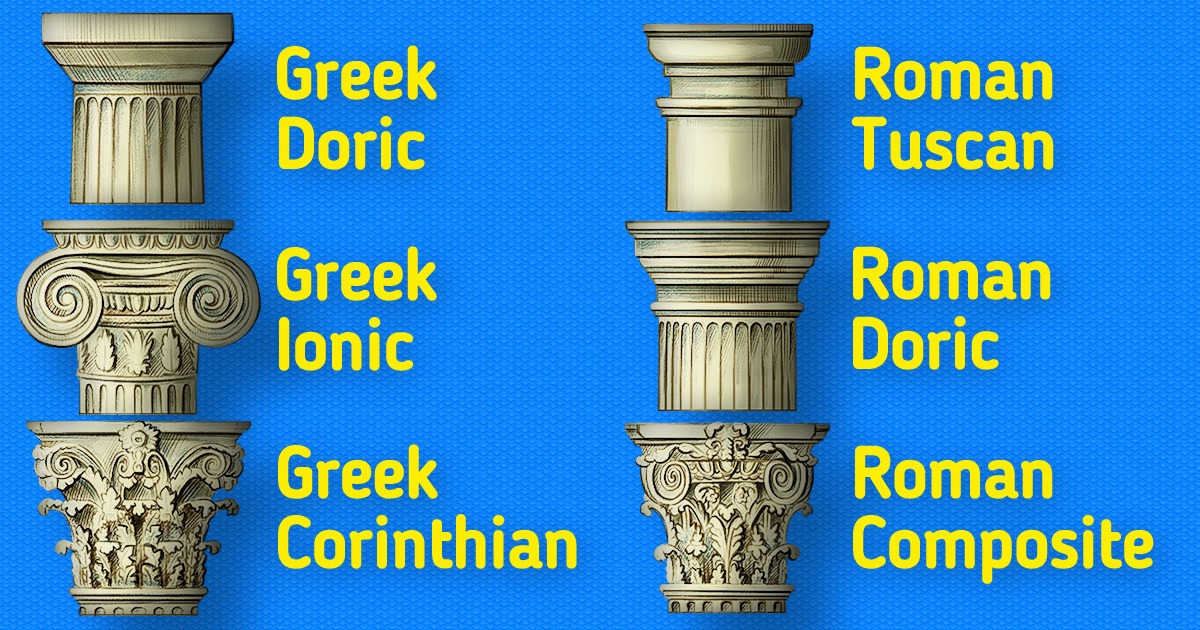
Ancient architecture was based on the principles of harmony, balance, and symmetry. The elegant columns from antiquity are still admired and widely represented in modern buildings. 5-Minute Crafts has prepared some tips on how to distinguish the main styles of ancient columns.
A. Parts of a column
Before checking the different types of columns, we thought it would be useful to understand the anatomy of a column since vocabulary can be intimidating, so let’s start with the basics.
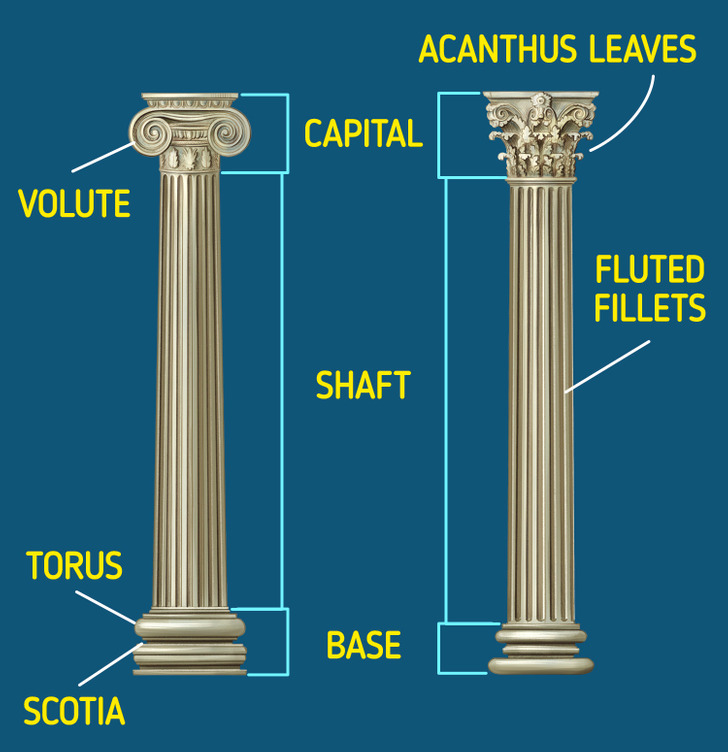
- Capital
The upper part serves as a connecting section between the shaft and the entablature (see the next paragraph), and it’s the most distinguishing component for each of the orders.
- Shaft
Usually, this has fluted fillets.
- Base
The base is not always present and it sometimes consists of various elements, such as torus (convex moldings), scotia (concave moldings), or fillets.
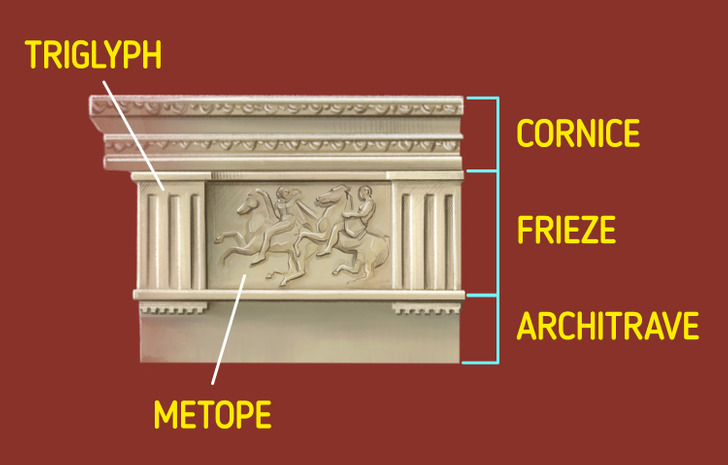
Columns are typically used to open up the space and let light penetrate the interior of the building, as well as to provide a feeling of balance and order. However, another important practical function they fulfill is to support the ceiling.
While the entablature is not a part of the column itself, we believe that it needs to be mentioned because it is the section that connects this column with the ceiling. It’s made up of the architrave, frieze, and cornice.
B. 6 styles of columns
There are 6 major ancient architectural orders that must be mentioned. Doric, Ionic, and Corinthian orders are Greek. They were later adopted by the Romans to become the Roman Tuscan, Roman Doric, and Roman Composite orders. All these columns can either be incorporated into the walls or they may also be free-standing.
1. Greek Doric
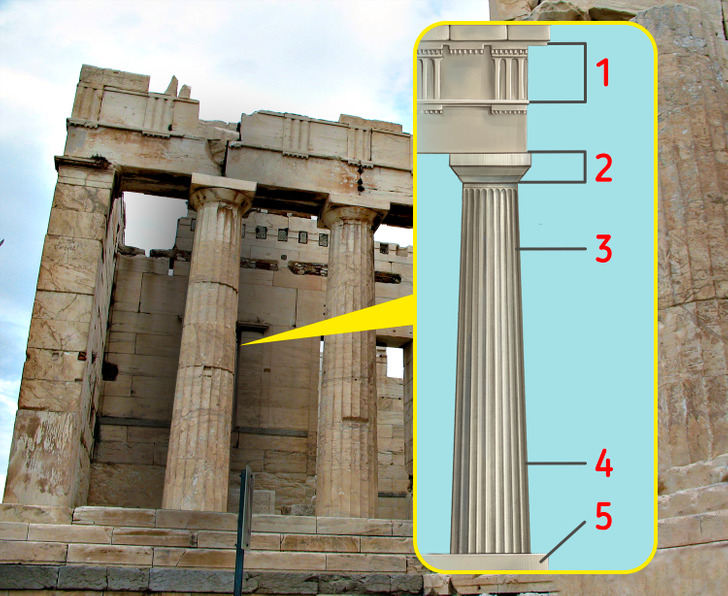
- The entablature’s frieze section has alternating triglyphs (3 separated vertical bands) and metopes (square panels that may have sculptured reliefs).
- A simple capital (a convex echinus + a square abacus) is connected to the entablature.
- A vertically fluted carving (20 flutes)
- A wider bottom part
- No base (the columns lays directly on the stylobate, the flat pavement itself)
2. Greek Ionic
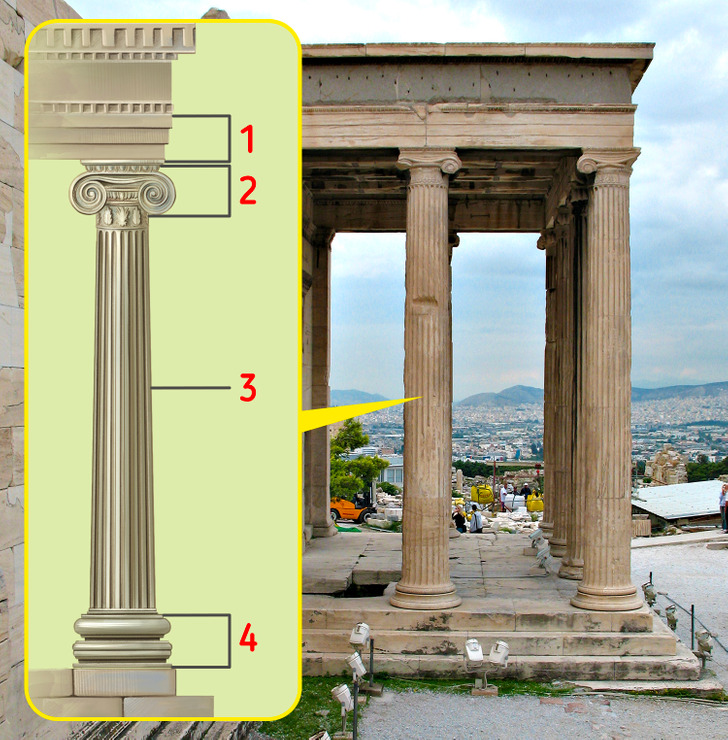
- Entablature — the architrave consists of 3 stepped bands, there are no triglyphs or metopes, and it may contain carved ornaments, like figural groups.
- A capital with a volute (double scroll), almost completely covering the echinus
- A vertically fluted carving (24 flutes)
- A base consisting of a plinth and moldings (torus + scotia + torus), called the Ionic (attic) base
Fun fact: There are Roman Ionic columns as well, but their capitals usually possess smaller volutes.
3. Greek Corinthian
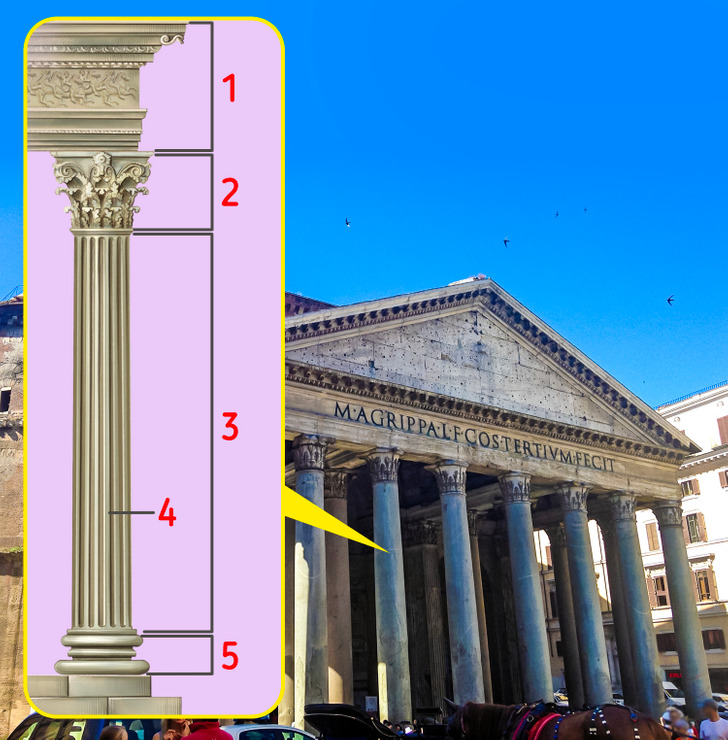
- An entablature with a continuously sculptured frieze, an ornamented cornice, and beads between architrave bands
- A richly decorated capital, carved with 2 rows of acanthus leaves and 4 scrolls
- Often a taller and slimmer shaft
- Predominantly vertical fluted carving (24 flutes with sharp edges)
- A base with different enriched moldings
4. Roman Tuscan
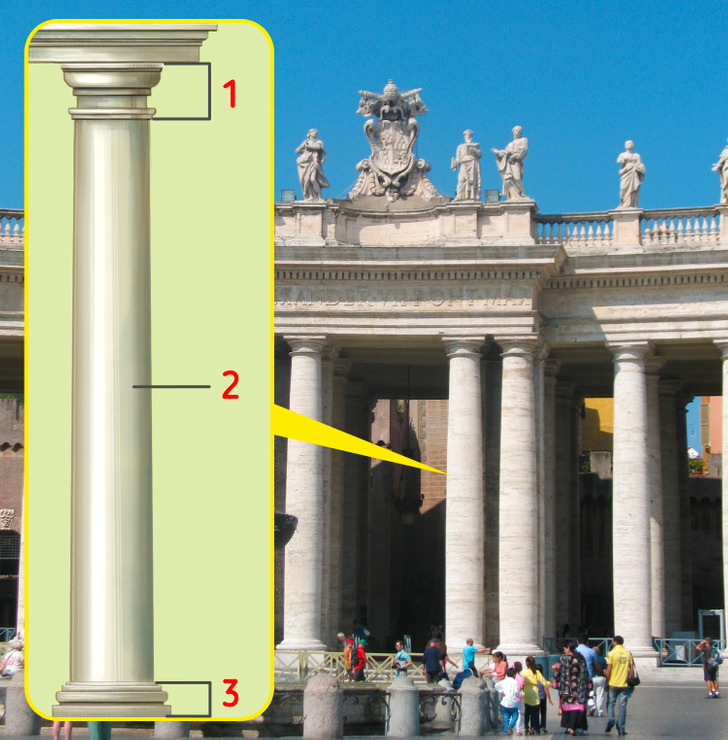
The Romans introduced their own adapted versions of the Greek columns.
The Roman Tuscan column is the adaptation of the Greek Doric order with the following features:
- A simple capital (plain echinus + abacus)
- A shaft with no flutes
- A simple base
- An overall solid look
5. Roman Doric
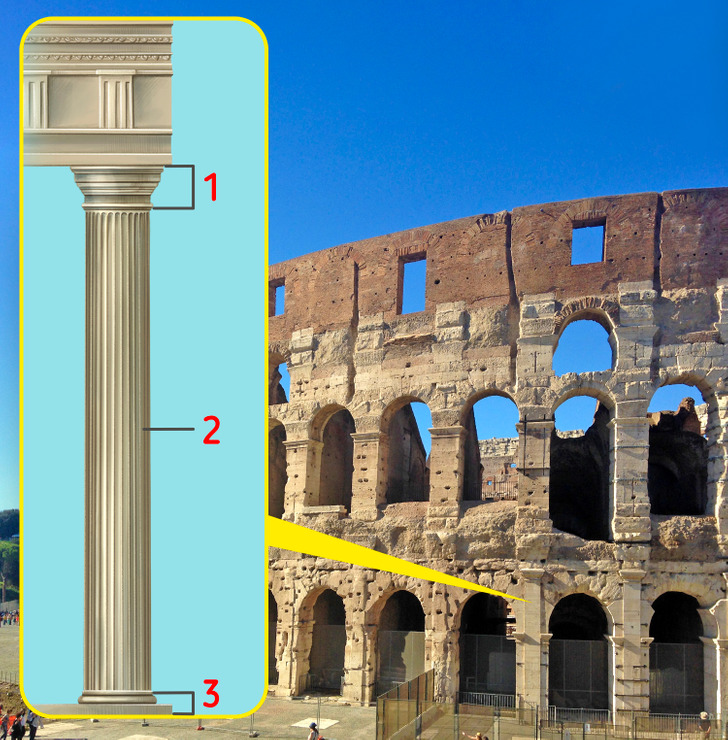
This has similarities with the Tuscan column, which means:
- A simple capital (an echinus that may be ornamented + abacus)
- A typically fluted shaft
- A simple base (one torus on a square plinth)
6. Roman Composite
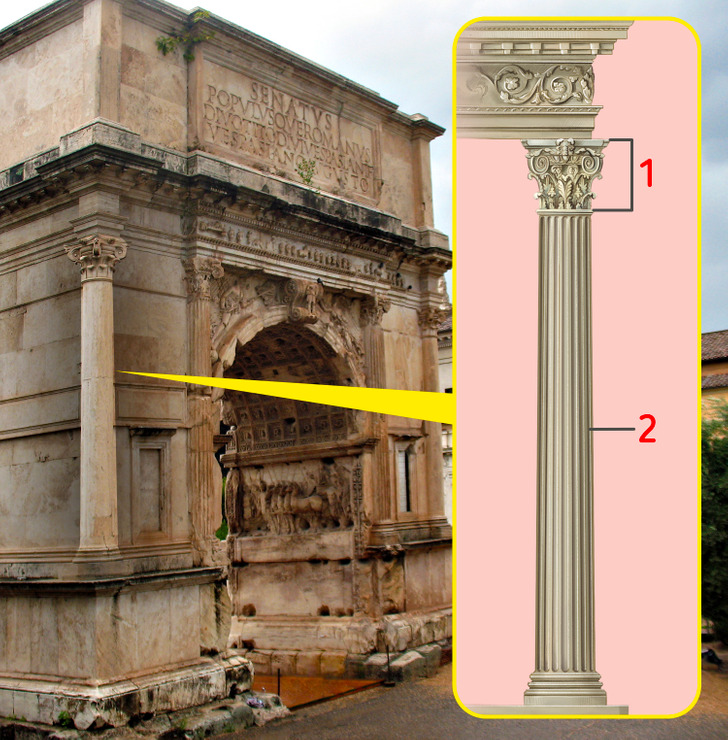
This column represents mixed elements of the aforementioned styles, which is why it’s called Composite. It started being considered a separate style only in the era of the Renaissance.
- A capital that contains both Ionic volutes and Corinthian acanthus leaves
- A typically fluted shaft that can also be smooth
C. Unique free-standing columns
Some of the free-standing columns had such distinctive features, they started being appreciated as separate works of art. Let’s take a look at the columns that deserve special attention.
1. The caryatids of the Erechtheion (Acropolis, Athens, Greece)
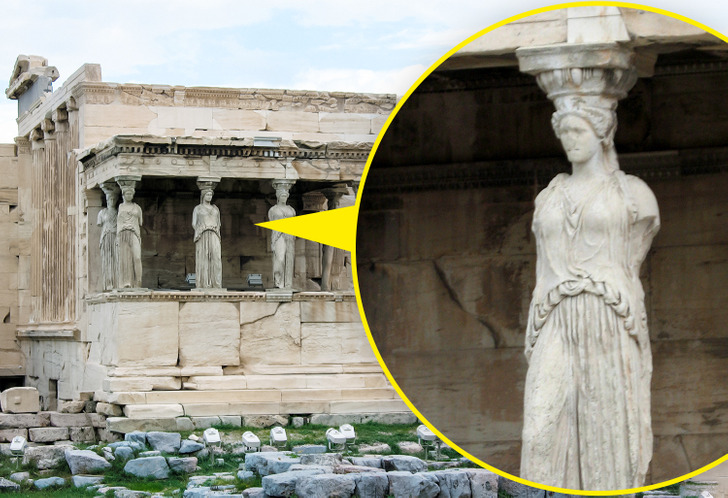
The caryatids in architecture represent columns shaped like female figures supporting the roof. We can see the most well-known example of caryatids on the porch of the Erechtheion temple in the Acropolis, Athens.
Some variations of caryatids also used in architecture are known as canephora (“basket carriers” in Greek), and columns shaped like male figures, called atlantes, refer to men supporting great weight on their shoulders.
2. Ionic Naxian Sphinx (Delphi, Greece)
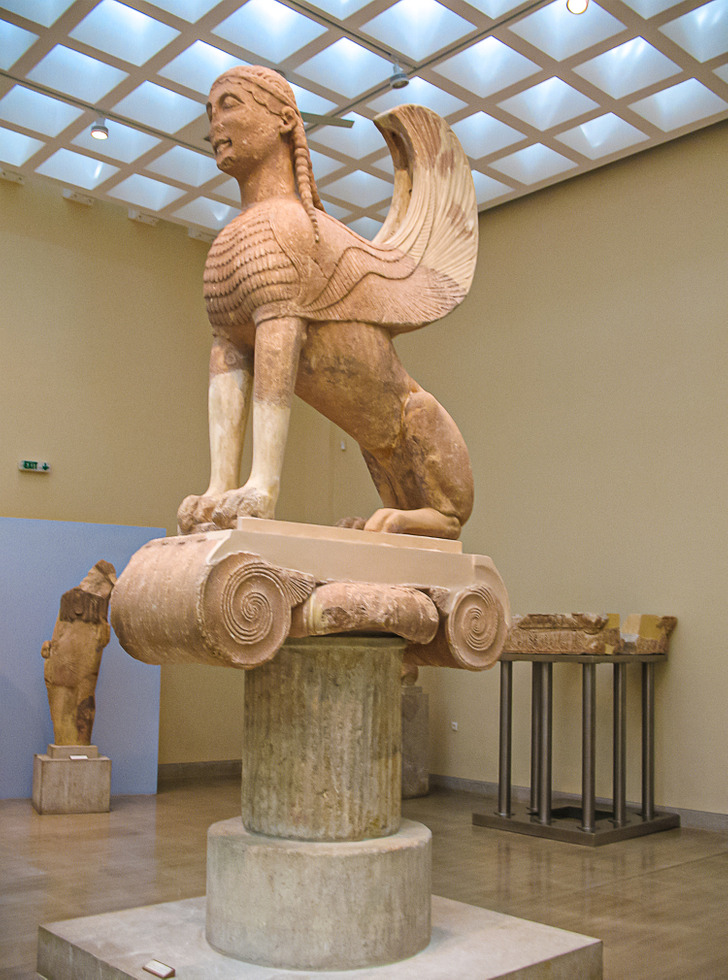
The Naxian Sphynx of Delphi, built in homage to the oracle of Delphi, originates from the sixth century BCE, and it once sat atop an Ionic column.
3. Trajan’s Column (Rome, Italy)
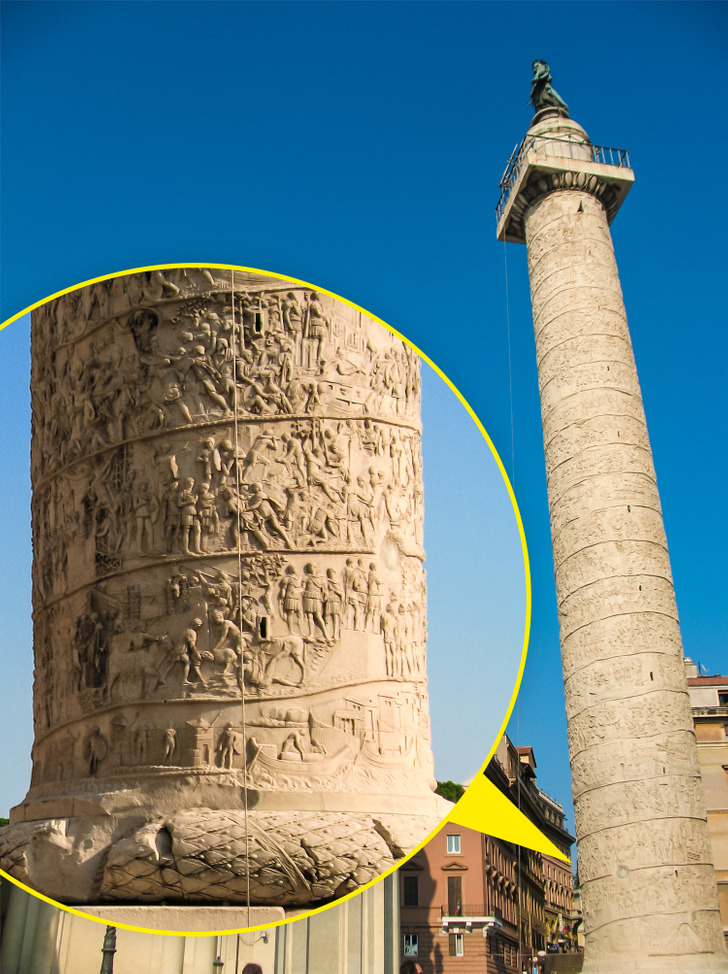
Trajan’s Column, built in the second century BCE by the famous Roman emperor in the heart of Rome’s Trajan’s Forum is conserved intact. The base holds a chamber meant to be the tomb of the emperor.
The most important element of the column is its spiral band with relieved sculptures that depict Trajan’s military campaigns in Dacia.
Fun fact: There is a spiral staircase in the interior of the shaft.